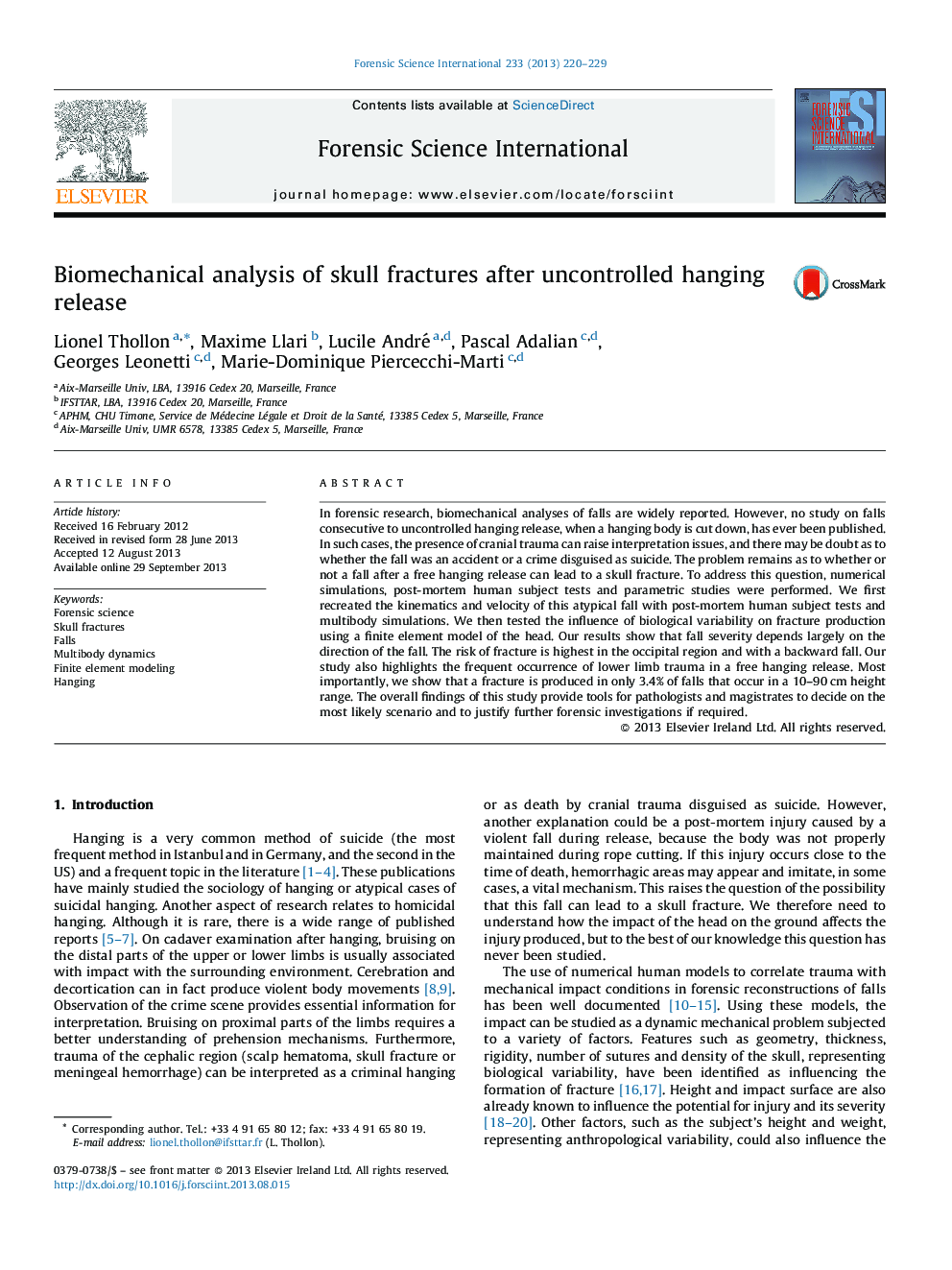| Article ID | Journal | Published Year | Pages | File Type |
|---|---|---|---|---|
| 6552751 | Forensic Science International | 2013 | 10 Pages |
Abstract
In forensic research, biomechanical analyses of falls are widely reported. However, no study on falls consecutive to uncontrolled hanging release, when a hanging body is cut down, has ever been published. In such cases, the presence of cranial trauma can raise interpretation issues, and there may be doubt as to whether the fall was an accident or a crime disguised as suicide. The problem remains as to whether or not a fall after a free hanging release can lead to a skull fracture. To address this question, numerical simulations, post-mortem human subject tests and parametric studies were performed. We first recreated the kinematics and velocity of this atypical fall with post-mortem human subject tests and multibody simulations. We then tested the influence of biological variability on fracture production using a finite element model of the head. Our results show that fall severity depends largely on the direction of the fall. The risk of fracture is highest in the occipital region and with a backward fall. Our study also highlights the frequent occurrence of lower limb trauma in a free hanging release. Most importantly, we show that a fracture is produced in only 3.4% of falls that occur in a 10-90Â cm height range. The overall findings of this study provide tools for pathologists and magistrates to decide on the most likely scenario and to justify further forensic investigations if required.
Related Topics
Physical Sciences and Engineering
Chemistry
Analytical Chemistry
Authors
Lionel Thollon, Maxime Llari, Lucile André, Pascal Adalian, Georges Leonetti, Marie-Dominique Piercecchi-Marti,
